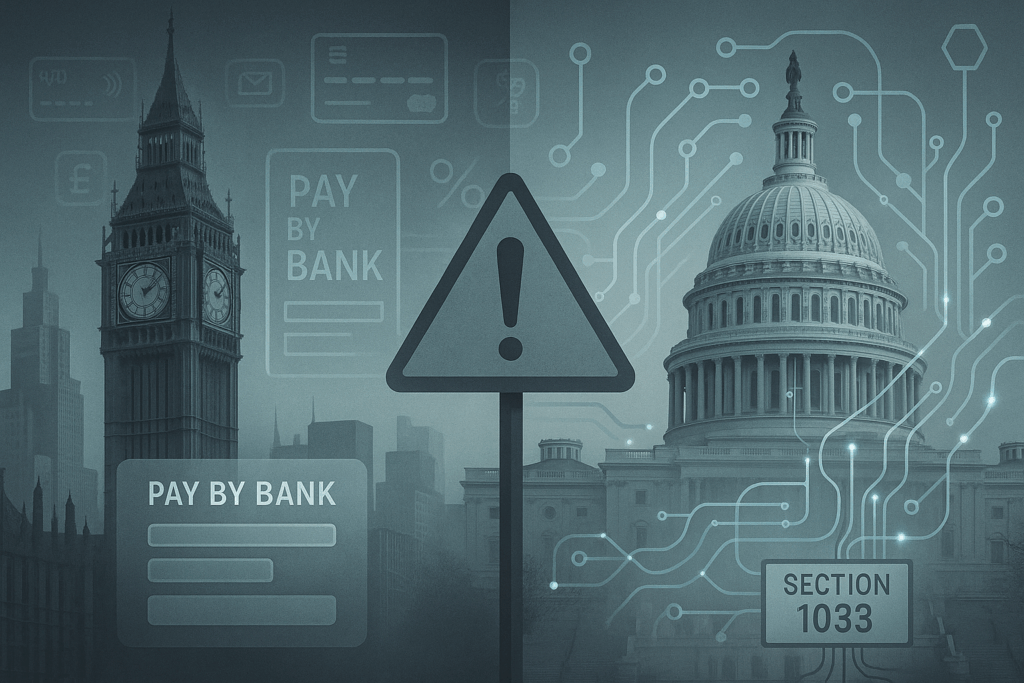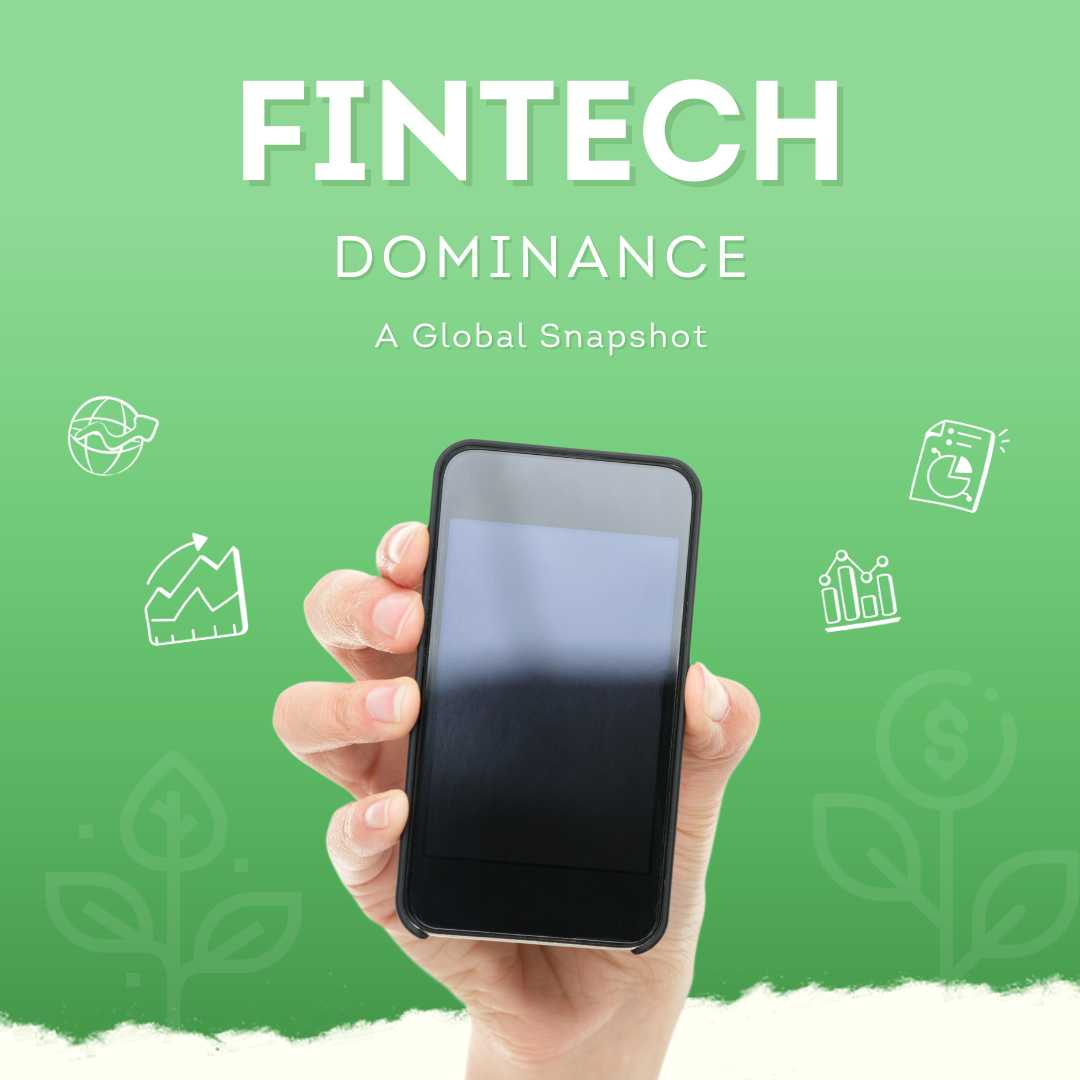When the United Kingdom launched its open banking initiative in 2018, it was billed as a financial revolution. Banks were ordered to let customers share their data and make payments through third-party apps, aiming to spark competition and chip away at the dominance of card networks. Yet, five years on, the revolution looks more like an evolution – and a slow one at that. While over one in nine Brits (around 11%) now use some form of open banking service, the uptake has fallen far short of early predictions. One optimistic forecast envisioned 60% of UK consumers embracing open banking by 2023. Reality proved very different: by early 2023 the figure was closer to 10-13% of digitally active consumers.
Open banking’s poster child use case – “Pay by Bank” instant payments – has gained only niche adoption. UK consumers and businesses made about 10.8 million open banking payments in August 2023, a record high at the time. That number sounds impressive until you stack it against Britain’s entrenched payment habits: Britons collectively make billions of card payments each month, as cards still account for the vast majority of retail transactions. In fact, all open banking payments in 2023 (about 130 million in total) amounted to well under 0.5% of the 48.1 billion payments made in the UK that year. The much-heralded Pay by Bank option is often buried at checkout pages and little understood by customers – a far cry from the mainstream breakthrough its architects envisioned.
This underwhelming progress is more than just a British concern. Across the Atlantic, U.S. regulators at the Consumer Financial Protection Bureau (CFPB) are in the midst of crafting America’s own open banking regime under Section 1033 of the Dodd-Frank Act. As they forge ahead, the UK’s experience offers a cautionary tale. How can the U.S. avoid repeating the UK’s mistakes? What lessons emerge from the UK’s struggles with slow consumer adoption, industry resistance, and the tricky task of turning lofty open banking ideals into everyday reality? This article takes a deep dive into those questions – examining hard data from the UK and EU, and mapping the implications for Section 1033 in the United States. The goal is not to throw cold water on open banking’s promise, but to ensure U.S. policymakers learn from Europe’s hits and misses before flipping the switch on America’s financial data-sharing revolution.

Table of Contents
ToggleThe UK’s Open Banking Experiment: Lofty Ambitions vs. Lukewarm Adoption
When the UK mandated open banking, the vision was bold: empower consumers to own their financial data and use it to find better deals, all while unleashing a wave of fintech innovation. The country’s nine largest banks (the “CMA9”) were required to build secure APIs that let customers share their account information and initiate payments through regulated third parties. In theory, this would erode big banks’ oligopoly, enable new services, and even challenge Visa and Mastercard’s stranglehold on payments. Open banking services officially went live in early 2018 amid much fanfare.
Fast forward to today, and the UK can claim some successes. By mid-2023, over 7 million consumers were “active” open banking users – using budgeting apps, account aggregators, or payment services powered by open banking. As of June 2023, over 1 in 9 digitally active Brits had used open banking in some form, up from virtually zero five years prior. Small businesses have been especially keen, with 17-18% of UK small firms now actively using open banking tools (for example, linking their bank accounts to accounting software or initiating instant payments to suppliers). The ecosystem of fintech providers has blossomed, offering everything from personal finance dashboards to alternative lending models that leverage shared bank data.
Critically, payment volumes via open banking have grown rapidly – at least in percentage terms. The UK’s open banking payments run on its Faster Payments infrastructure, enabling near-instant bank-to-bank transfers as an alternative to card payments. In June 2023 alone, 9.7 million open banking payments took place, an 88% increase over the same month a year earlier. By January 2024, monthly open banking payments hit a record 14.5 million. The trendline is undeniably upward. And because these bank-to-bank payments are often used for large transactions like mortgage payments or tax bills, their value is substantial: the average open banking payment is ~£450, translating to roughly £4.5 billion in total value per month flowing through the open banking pipes as of mid-2023.
Yet, for all this growth, open banking remains a tiny sliver of UK finance. More than five years in, the numbers are modest next to incumbents: 14.5 million bank-to-bank payments per month is a rounding error in a country that logs 4+ billion payments monthly across cash, cards, and electronic methods. Put another way, the entire year’s worth of open banking payments in 2023 (130 million) accounted for barely 0.27% of UK payment volumes. Open banking in Britain has certainly not “gone viral” among consumers. Many Brits have never heard of Pay by Bank, let alone tried it. As Rebecca Hickman, a UK financial services lawyer, noted (in FT), uptake of Pay by Bank has been “slower than many expected,” in part due to a “lack of customer understanding” and awareness of the option. Habit inertia is powerful: faced with a familiar bank card or an unfamiliar new payment button, most people stick with what they know.
Pay by Bank: Why UK Consumers Shrugged at a Card Alternative
To understand the UK’s cautionary tale, consider the saga of Pay by Bank – essentially, using your banking app to pay a merchant directly from your account. In theory, this has big advantages. For merchants, a Pay by Bank transfer carries no card network interchange fees, which in the UK are capped at ~0.3% but still significant for large purchases. For consumers, it can mean no credit card debt and a streamlined checkout (no card numbers to enter). UK regulators hoped Pay by Bank would emerge as a cheaper, innovative alternative to card payments, driving down costs and fostering competition.
In practice, Pay by Bank has struggled to break through. As of late 2023, open banking payments – which include Pay by Bank e-commerce checkouts, account funding transfers, etc. – made up only 5-8% of digital payments in sectors where offered. Most shoppers still reflexively pull out a debit or credit card for online purchases. Industry surveys in Britain reveal two big hurdles: (1) Consumers have little incentive to switch to bank payments when cards are easy, universally accepted, and often reward-bearing; and (2) There are lingering concerns about consumer protection and trust with account-to-account payments.
On the first point, convenience is king. Card payments (especially contactless and one-click digital wallets) are fast and familiar. By contrast, early open banking payments often required a clunky redirect to your bank’s app or website for authentication, disrupting the checkout flow. Only in recent years have fintech intermediaries rolled out smoother “app-to-app” handoffs and saved details akin to a stored card. As Tony Craddock of the UK Payments Association observed, “once [open banking] transactions are as easy to complete as card payments, retailers will naturally prefer the cheaper option” – but getting to that level of ease took time. For a long while, integrating Pay by Bank required custom tech work by merchants, limiting it largely to big enterprises. Smaller retailers didn’t bother adding a payment method that few customers were asking for.
Then there’s the confidence factor. British consumers trust that if something goes wrong with a card transaction – an undelivered good, a fraudulent charge – they can reverse or dispute the payment. With a bank payment, the perception is you’re more “on your own.” Indeed, under open banking the money moves instantly out of your account, and chargeback-style protections are not built-in as they are with credit cards. Regulators have been grappling with this: the UK is exploring new consumer protections for open banking payments to bolster trust. But early on, the lack of a safety net made some users hesitant. Surveys find that while many Brits consider bank payments theoretically safer (no card number to steal), they still worry about misdirected transfers or scams. The industry has tried to address this by, for example, implementing confirmation of payee (name-checking to prevent transfers to the wrong account). Still, it’s an uphill battle to match the perception of security that decades-old card networks enjoy.
The net result in the UK: Pay by Bank remains an underdog, used mainly in certain niches. One bright spot has been government bill payments. Her Majesty’s Revenue & Customs (HMRC) – essentially the UK’s IRS – became the first government body to adopt open banking payments in 2021, offering a “Pay by bank account” option for online tax payments. Uptake has grown steadily. In January 2024 alone (tax season), over 1 million Brits used Pay by Bank to send £3.3 billion in self-assessment tax payments to HMRC, a 39% jump in value from the year prior. This shows that when presented clearly and used for high-trust payees (like paying the government or utility bills), many consumers will give account-to-account payments a try. But beyond such use cases – and a handful of large merchants that have promoted bank payments – the average UK consumer is still far more likely to tap their contactless card or use Apple Pay than to initiate an open banking payment at checkout. Lack of awareness, inconsistent user experience across banks, and perceived risks have kept Pay by Bank on the sidelines for everyday spending.
Variable Recurring Payments (VRP): The Next Great Hope That’s Still Waiting
If one-off Pay by Bank transactions have had a tough time, the story of Variable Recurring Payments (VRPs) is even more cautionary. VRPs were touted as “the next big thing” in UK payments – an open banking-based replacement for direct debits and card-on-file subscriptions. The idea is powerful: with a VRP, a customer can grant a third-party provider (say, a utility company or a streaming service) permission to pull payments from their bank account within agreed limits and intervals. It’s like a flexible standing order – you set a maximum amount and frequency, and the merchant can initiate payments up to those limits without needing you to approve each time. This promised to combine the convenience of recurring card payments with the cost savings of bank transfers and greater consumer control.
The UK’s regulatory journey with VRP, however, has been very incremental. The Competition and Markets Authority (CMA) mandated that the big banks implement VRP only for “sweeping” use cases – meaning moving money between a customer’s own accounts (for example, automatically sweeping excess funds from a checking account to a savings account, or pulling money to pay off a credit card bill). By July 2022, all the CMA9 banks had to enable VRP APIs for these personal finance use cases, and indeed they did. But crucially, regulators stopped short of forcing VRP open for commercial uses (like paying third-party billers). Any non-sweeping VRP – say, a fintech app paying your utility bill on your behalf each month – would have to be enabled via a commercial agreement between the bank and the third-party provider. In plain terms, the banks could decide if and when to roll out VRPs beyond the limited sweeping scenario, and on what pricing terms.
For a while, progress was glacial. A couple of forward-thinking banks (NatWest in particular) struck pilot deals with fintech firms in 2022 to test VRP for things like subscription payments. This led industry optimists to assume a domino effect: surely other banks would quickly follow. They didn’t – at least not initially. As of mid-2023, most major UK banks had not widely opened up VRP for commercial uses, or only did so for select partners in trials. The reasons were both technical and commercial. Bankers fretted over the “cannibalization” question – why facilitate a wave of recurring payments that could undermine their lucrative card interchange revenue? Unless VRP could be monetized or priced, many banks saw little upside in rushing it out. There were also unresolved questions about liability and risk. If a rogue third-party initiates an improper pull from a customer’s account, who eats the loss? The UK’s regulators (through the Joint Regulatory Oversight Committee, or JROC) and industry groups have been hammering away at standard liability models and pricing frameworks for VRP, but getting all parties to agree has proven slow. In short, without a regulatory mandate, VRP needed a clear business case for banks – and that took time to forge.
Despite these hurdles, VRP has started to show signs of life in the UK, albeit mostly in its limited form. Since the sweeping launch, usage has grown from a trickle to a steady flow. By late 2023, UK open banking data showed over 1 million VRP transactions per month (up from virtually zero a year prior). In September 2023, VRPs actually accounted for about 8.7% of all open banking payments – roughly 1 in 12 open banking transactions were now via VRP rather than a one-off payment. That sounds impressive, but remember: open banking itself is still tiny. Eight percent of a small pie is an even smaller pie. And crucially, nearly all these VRP transactions were “sweeps” between accounts owned by the same person, not true commercial subscription payments. In other words, most of that 1 million/month VRP volume was likely things like auto-transfers into savings or moving spare change into investment apps – useful, but hardly the game-changing disruption of Direct Debit that some had imagined.
UK regulators aren’t blind to this. The Payment Systems Regulator (PSR) and JROC have explicitly identified expanding VRP beyond sweeping as a priority for the next phase of open banking policy. They’re working with industry bodies (like UK Finance, which published model VRP contracts) to hash out standards so banks can safely roll out “non-sweeping” VRP for things like utilities, telecom bills, charitable donations, and more. The expectation is that in 2024-2025, we’ll see broader availability of VRP in the UK – essentially turning it into a premium API service that fintechs and merchants can plug into. But even optimists concede this will be a gradual race, not a sprint. It’s taken years for the industry to agree on pricing and safeguards, and until a critical mass of banks and providers sign on, merchants won’t actively promote VRP to customers. As the Celent analysts wryly noted, initial projections for VRP uptake were “a little too optimistic” and underestimated the complexity of aligning so many stakeholders. Essentially, VRP in the UK is still in beta – a promising concept with only a minor real-world footprint so far.
Key Takeaways from the UK for the U.S.:
- Building the Pipes Isn’t Enough: The UK successfully built the technical infrastructure for open banking payments and VRPs, but usage lagged until compelling use cases and incentives emerged. U.S. regulators must remember that mandating banks to open data access (or payment functionality) is just step one; driving actual adoption requires equal attention to user experience, education, and trust-building.
- Consumer Behavior Changes Slowly: British consumers didn’t stampede to open banking payments despite potential cost savings and convenience. Habits like card usage have deep roots (decades of ingrained behavior and reward programs). American consumers, who are even more tied to credit card rewards and established apps like PayPal/Venmo, may be similarly reluctant to switch to unknown alternatives. Patience and gradualism will be key – as well as making new options as seamless as existing ones.
- Incentives and Business Models Matter: UK banks had little financial incentive to champion open banking; it was a compliance exercise for them. The result was minimal marketing and some foot-dragging (e.g. slow rollout of VRP beyond what was mandated). The U.S. should consider how to align incentives so that data sharing and any future “pay by bank” systems are not viewed by institutions purely as revenue losers. This might mean allowing banks to charge for premium services, or at least ensuring they aren’t bearing all the costs with none of the benefits. Conversely, merchants in the U.S. do have a strong incentive (high card fees to escape), which could help – but only if banks and fintechs provide viable products for them to push to customers.
- Consumer Protection is Paramount: One of the UK’s stumbles was not addressing consumer protection fears early and robustly. The U.S. can learn from this by baking strong liability and dispute-resolution frameworks into its open banking regime from the get-go. American consumers will expect error resolution rights similar to Regulation E (for bank transfers) or Regulation Z chargebacks (for credit cards). If new payment mechanisms lack clear protections against fraud or mistakes, don’t expect users (or regulators) to embrace them readily.
- Don’t Rely on “Build it and they will come” – Promote it: The UK experience shows that usage won’t automatically follow just because APIs are available. It took government agencies like HMRC making the Pay by Bank option visible, and fintechs offering tangible benefits (like easier account setup for budgeting apps) to entice users. U.S. regulators and industry stakeholders will need to actively promote awareness of new data-sharing rights and any “pay from bank” options – possibly even having government payments or big utilities adopt them to lead by example, as the UK government did.
With these lessons in mind, let’s shift focus to where the U.S. stands and how Section 1033 implementation is unfolding.
Section 1033 of Dodd-Frank: America’s Data-Sharing Push
Section 1033 of the Dodd-Frank Act (2010) is the legal foundation for U.S. open banking – though it wasn’t called that at the time. In essence, Section 1033 gives consumers the right to access their financial account data and directs the CFPB to write rules to make this a reality. For a long time, this authority lay dormant. Meanwhile, the market filled the gap: companies like Plaid, Yodlee, and MX built data aggregator networks, albeit often via “screen scraping” (having consumers hand over their bank passwords so the aggregator can mimic a login and pull data). This patchwork system connected millions of Americans’ accounts to fintech apps – over 100 million consumers globally (many in the U.S.) have used such services by 2023 – but it came with security risks and no uniform standards. Regulators watched warily as fintech adoption grew and calls for a safer, more reliable framework mounted.
It wasn’t until 2021-2022 that the CFPB, under new leadership, really picked up the 1033 baton. The Bureau convened stakeholders and kicked off a rulemaking process to establish “personal financial data rights.” In October 2023, the CFPB issued a draft rule (NPRM), and by October 2024 it finalized the first phase of the Section 1033 rule. The rule is sweeping in scope: it requires banks, credit unions, credit card issuers, digital wallets, and other providers to give consumers (and their authorized third parties) free access to a broad range of financial data. This includes transaction history, account balances, account terms, and even information needed to initiate payments or switch accounts. Practically, it means your bank must let you easily share your data with a budgeting app or a competing bank if you’re shopping for better rates. Critically, the rule seeks to end screen scraping by moving to structured APIs, and it forbids financial institutions from charging fees for data access – much like the UK/EU rules that made open banking a free utility for fintechs (to banks’ chagrin).
The CFPB framed this in pro-competition terms. Director Rohit Chopra said the aim is to let Americans “more easily fire financial companies that provide bad service”. By lowering switching costs and data barriers, consumers could refinance loans or move accounts more readily, ideally pressuring incumbents to offer better deals. It’s essentially an attempt to import the logic of UK open banking (boost competition, spur fintech innovation) to U.S. soil, albeit with an American twist – focusing squarely on consumer data portability. Notably, the initial rule does not explicitly create a new payments regime like Pay by Bank. It mentions “information needed to initiate payments” as shareable data, but it doesn’t outright mandate banks to let third parties initiate transactions the way PSD2 in Europe did. That said, the CFPB has indicated this is just the “first step” and that future rulemaking may expand to additional products and use cases – potentially opening the door to broader open finance and even payment initiation down the road.
Regulatory Reality Check: Uncertain Future for the Rule
If the UK’s challenge was slow adoption, the U.S. challenge – at least right now – is getting the rules in place at all. The ink was barely dry on the final Section 1033 rule in late 2024 when obstacles emerged. The banking industry bristled at the scope and cost of the mandate (no surprise, since banks must build and maintain APIs for free access). In early 2025, a consortium of bank trade groups sued the CFPB, arguing that the Bureau overstepped its authority with the 1033 rule and that forcing “free, comprehensive data-sharing” could undermine security and existing industry-led solutions. In May 2025, in a dramatic turn, the CFPB itself – facing the likelihood of protracted litigation – indicated it would rescind its own Section 1033 rule and revisit the approach. The Bureau’s general counsel acknowledged “clear legal deficiencies” in the rule as passed. Essentially, the regulators blinked: rather than battle it out in court for years, the CFPB signaled it would go back to the drawing board and try to craft a more legally unassailable (and industry-palatable) framework.
This whiplash development underscores a key difference in the U.S.: our more adversarial, litigious environment around regulation. In the UK, regulators had the political backing to push through open banking by edict of the competition authority. Banks complied (albeit grudgingly) because the mandate was clear and unavoidable. In the U.S., agencies operate in a tighter legal lane, and powerful lobbies can and will drag rules into court. As of this writing, the fate of Section 1033’s implementation is uncertain – it’s a live issue whether the CFPB will rewrite the rule, fight for it, or see legislative action alter its course.
For U.S. regulators, this is a caution that goes beyond what the UK faced: the policy design must not only consider adoption and market impact, but also legal durability. The CFPB’s initial rule tried to do a lot at once (cover many account types, strict “for free” requirements, etc.), prompting pushback. A lesson might be to phase the implementation or build on existing industry standards to reduce opposition. Notably, even without a federal rule, the U.S. market hasn’t stood still: many banks and fintechs have coalesced around the Financial Data Exchange (FDX) API standards for data sharing, and big banks have struck data-access agreements with aggregators to slowly replace screen scraping. In effect, a private-sector version of open banking has been evolving. Bank lobbyists argued in court that the CFPB’s rule would “undermine safer, emerging private-sector efforts” and expose consumers to new risks. Fintech advocates, on the other hand, accused banks of trying to maintain data monopolies and stifle competition by derailing the rule. It’s a classic policy tug-of-war, and how it resolves will shape U.S. open banking dramatically.
Regardless of when or in what form Section 1033 comes to life, the underlying consumer demand for easier data sharing isn’t going away. Americans increasingly expect to connect their accounts to apps, to have a full picture of their finances, and to move money with minimal friction. The drive toward real-time payments (with the FedNow service launching in 2023 and Zelle’s popularity for P2P) suggests there may also be appetite for faster, cheaper alternatives to cards in certain scenarios. In other words, the market rationale for open banking remains strong. The question is whether regulators can design the ecosystem in a way that avoids the pitfalls seen abroad.
Will the U.S. Repeat the UK’s Mistakes – or Avoid Them?
With the UK and EU experience as a guide, U.S. stakeholders have a chance to course-correct in areas where open banking overseas struggled. Here are several market-structure differences and how they could influence outcomes:
- Credit Card Dominance and Rewards: Unlike Europe, the U.S. is a credit card-centric culture. Over 70% of American adults have at least one credit card, and lucrative reward programs (cashback, miles) incentivize using them for everyday spending. This means a Pay by Bank solution in the U.S. faces an even steeper uphill battle to entice consumers. Why would an American pay from their bank account (and forego 2% back or airline miles) unless there’s a clear benefit? Merchants have a reason – they pay ~2-3% swipe fees on those cards, far higher than the UK’s ~0.3% cap, so large U.S. retailers are very keen to shift consumers to cheaper methods. We might expect some U.S. retailers to push bank payments with incentives (for example, ACH discounts or cash rebates). But without regulatory or network-level changes, the powerful card reward ecosystem will be a formidable barrier to behavioral change. U.S. regulators should monitor this closely: it might be that open banking payments, if they emerge, gain traction first in contexts where cards are less entrenched (like bill payments or account funding) rather than retail purchases.
- Diverse Banking Landscape: The U.S. has thousands of banks and credit unions, whereas the UK’s market is concentrated in a dozen big players. Implementing standardized APIs across a fragmented industry is inherently challenging. The CFPB’s rule smartly planned a phased compliance, giving smallest institutions until 2030 to comply. Additionally, the final rule exempted very small banks (under ~$850 million in assets) altogether. This avoids over-burdening community banks. However, the trade-off is that not all consumers will have equal access immediately – potentially slowing network effects. By contrast, the UK could focus on the CMA9 which covered an outsize share of accounts. U.S. regulators might consider leveraging existing network hubs (like core banking software providers or aggregator platforms) to help smaller institutions hook into open banking, rather than each bank building from scratch. If done well, the U.S. could achieve broad coverage without the long-tail banks becoming a weak link.
- Fintech Aggregator Ecosystem: One advantage in the U.S. is that data sharing via fintech apps is already mainstream – it’s just been unofficial. Services like Mint (launched 2007) and dozens of neobanks, investment apps, and budget tools have accustomed Americans to linking accounts. An estimated half of U.S. consumers use fintech apps that rely on account connectivity in some form. This existing demand means that if a secure, standardized API network is offered (through Section 1033 rules or industry adoption), fintechs and consumers will likely migrate to it readily. We saw a parallel in the UK: once the open banking APIs stabilized, screen scraping dropped sharply as aggregators like Plaid UK and TrueLayer switched to the official pipes. In the U.S., many large banks have already enabled tokenized data feeds to popular apps, reducing the need for storing customer passwords. A federal open banking regime could accelerate and broaden this trend, if it’s implemented. The key lesson from the UK here is quality of service: early on, some UK bank APIs were slow or unreliable, frustrating fintech developers and users. The U.S. can’t afford a flaky system; regulators may need to set performance standards and monitoring so that banks maintain uptime and speed on their data APIs – otherwise fintechs will be stuck in a half-scraping, half-API limbo.
- Payment Infrastructure Readiness: One reason Pay by Bank had a shot in the UK was the presence of Faster Payments, a near-instant, 24/7 interbank network. The U.S. historically lacked a real-time payment rail accessible to all consumers (wires are costly, ACH is slow). Now, with The Clearing House’s RTP network and the Federal Reserve’s FedNow live, the plumbing exists for instant bank payments in the U.S. However, coverage is still growing – not all banks are on FedNow yet. Moreover, there is no universal front-end for consumers to make instant bank-to-merchant payments (Zelle and Venmo are P2P oriented and not widely used for retail checkout). If the U.S. wants to enable a Pay by Bank scenario, it might require industry coordination or new apps that utilize these real-time rails. Perhaps incumbent payments players (like PayPal, which already links bank accounts) will integrate FedNow for merchants. Or maybe a tech giant could build a wallet that draws from bank accounts directly. Regulators could help by clarifying rules around funds availability, liability for fraud in push payments, and standards for request-to-pay messaging. The UK learned that having the rail isn’t enough – you need an ecosystem of overlays (QR codes, mobile authentication, etc.) to make it usable in everyday scenarios. The U.S. might consider public-private initiatives to develop those consumer-friendly layers on top of FedNow/RTP.
- Consumer Protection and Liability Alignment: As noted, the U.S. has strong consumer protections for electronic payments (Regulation E for unauthorized EFTs, zero-liability policies for cards, etc.). Any open banking-based payments will need to offer comparable peace of mind to gain trust. One lesson from Europe is the importance of a clear liability framework. The UK only recently tackled this for VRPs and even now is ironing it out. The U.S. has an opportunity to address it upfront. For example, if a third-party initiator causes a wrongful payment, regulators could decide whether the bank or the initiator bears the responsibility for reimbursing the customer. Likewise, standards for dispute resolution could be built into any future payment facilitation rule under Section 1033. This might actually be easier in the U.S. given our existing legal frameworks – it could piggyback on Reg E’s structure, extending error resolution rights to any CFPB-regulated data recipient that initiates payments. By preemptively solving the “who pays if something goes wrong” question, U.S. regulators can avoid the paralysis that hit VRP adoption in the UK due to uncertainty and infighting on risk allocation.
In short, the U.S. has both advantages and disadvantages compared to the UK. There is a large, pent-up demand for better data access (witness the growth of Plaid and friends), and merchants are eager for alternatives to costly card networks. These factors could drive faster adoption of open banking-powered services in the U.S. than what we saw in Britain if the regulatory environment permits. On the other hand, U.S. consumers are arguably even more comfortable with the status quo (cards, big banks) and may need extra nudges to try something new. The potential for legal roadblocks is also higher, meaning progress might come in fits and starts.
Lessons for U.S. Regulators: Making Open Banking a Success
As the CFPB and other U.S. regulators (like the Federal Reserve or OCC) contemplate the road ahead, here are a few concrete lessons distilled from the UK/EU saga:
- 1. Focus on the User, Not Just the Pipes: It’s easy for regulators to get engrossed in technical standards and data formats. But a lesson from the UK is that user experience can make or break adoption. The CFPB should collaborate with the industry on guidelines for authorization flows that are simple and consistent. If every bank has a wildly different authentication process for third-party access, consumers will be confused and distrustful (the EU saw this until the EBA stepped in to demand more consistency). Setting some baseline UX expectations – for instance, that consumers can easily see and revoke connections in their banking app, or that third-party payment initiation (if allowed) should support one-click confirmations – can drive comfort. The UK’s improvement in conversion rates when banks adopted app-to-app biometric login is telling. U.S. regulators don’t typically dictate UX, but they can strongly encourage best practices and coordinate industry efforts on this front.
- 2. Phased Rollout and Quick Wins: Rather than a big-bang approach, a phased implementation (which CFPB had in mind) allows learning and adjustment. The UK’s open banking took years to refine via versioned standards and iterative improvements. One strategy is to prioritize high-value use cases early. For example, facilitating consumer permissioned access to checking account data (for budgeting, credit scoring, etc.) is relatively low-risk and immediately useful. The CFPB’s rule indeed started with read-access for core accounts. Ensuring that goes live smoothly could build momentum. Payment initiation could be a later phase, perhaps starting with something safe like bill payments or account transfers (analogous to the UK’s “sweeping”). This way, stakeholders can score quick wins – like Americans seamlessly switching banks or getting better loan offers by sharing data – which build goodwill for the more challenging steps later.
- 3. Industry Collaboration (Banks + Fintechs) is Essential: The adversarial tone of the current 1033 fight is worrying. In the UK, despite initial opposition, banks eventually engaged through the Open Banking Implementation Entity and various working groups to iron out standards. U.S. regulators should foster a collaborative approach. This could mean supporting industry standard bodies like FDX as part of the solution (indeed, Section 1033 encourages standard formats). It also means listening to bank concerns about security and cost, and fintech concerns about fair access, and finding compromises. For instance, banks fear data-sharing could increase fraud. One mitigation is establishing certification and oversight for third-party data recipients, similar to the UK’s FCA authorization of open banking providers. The CFPB could work with other regulators to ensure a robust accreditation system for fintechs – giving banks confidence that only trustworthy, vetted actors are getting data (and those actors can be held accountable for misuse). In return, banks might be more comfortable not charging fees or imposing roadblocks.
- 4. Incentivize Modernization and Competition: The whole spirit of open banking is to spur competition, but regulators might need to directly incentivize certain behaviors. For example, the Federal Reserve or Treasury could consider requiring open banking functionality as a condition for participation in certain programs, or rewarding banks that adopt early. Conversely, they should be ready to shine a light on laggards – public transparency reports on API performance, usage levels, and compliance can motivate banks to improve (nobody wants to be called out as the least interoperable bank). The UK published metrics on API uptimes and user numbers by bank, which applied gentle pressure via reputational risk. Similarly, U.S. regulators could use disclosure as a tool to push the market along.
- 5. Keep an Eye on Market Power Dynamics: One somewhat ironic outcome in the UK is that big banks, after initially resisting, have arguably maintained their dominance – they complied with open banking but also now control much of the premium API development and can charge for extra services in the future. The new open banking players (fintechs) have certainly grown, but no bank’s market share dramatically eroded purely due to open banking. The lesson is that data portability alone doesn’t guarantee consumers will switch en masse. In the U.S., regulators might need to pair Section 1033 with other pro-competitive measures if the goal is truly to unstick a concentrated market. This could include easier account portability (like automatic switching services), or even revisiting interchange fee structures to level the playing field for payment alternatives. Otherwise, open banking could end up being a useful add-on feature rather than a game-changer in market structure.
Conclusion: Seizing the Opportunity, Not the Hype
Open banking was never going to be a magic wand that instantly transforms finance – not in the UK, and not in the U.S. The British experience shows both the significant potential and the sobering challenges of trying to empower consumers in a banking landscape built on decades of legacy practices. It took the UK six years to get from concept to a point where just over 10% of consumers actively use open banking, and even then mainly for niche purposes. The road was bumpy: banks dragged their feet at times, fintechs struggled to earn trust, and customers took convincing to leave their comfort zone. Now, the UK is iterating – pushing into open finance and expanding VRPs – but with a clear-eyed view that change comes “slowly at first, then all at once,” as one report quipped, citing how contactless payments took nearly a decade to catch on.
For U.S. regulators and lawmakers, the cautionary tale from across the pond is invaluable. Section 1033 implementation should be pursued with ambition, but also with humility. The ambition is to give Americans control of their financial data, to lower barriers to switching, and to encourage fintech innovation that could save people money and improve financial health. The humility is recognizing that merely writing rules won’t make it so – it will require relentless focus on real-world usability, continuous dialogue with industry, and perhaps most importantly, patience. The benefits of open banking accrue over time as the ecosystem matures; expecting a dramatic shake-up overnight is unrealistic.
There is, however, reason for optimism that the U.S. can get it right. Sometimes being a “fast follower” has perks: we can study what worked and didn’t elsewhere. If U.S. regulators address the UK’s pitfalls – by ensuring strong consumer protections, fostering collaboration rather than conflict, and aligning incentives to encourage adoption – Section 1033’s promise can be realized without becoming another story of overhyped fintech disappointment. The coming years will reveal whether America’s approach to open banking will unlock a new era of competition and innovation, or simply echo the UK’s modest results. The cautionary tale has been written; it’s now up to U.S. policymakers to craft a different ending, one where the open banking revolution might finally live up to its name.












